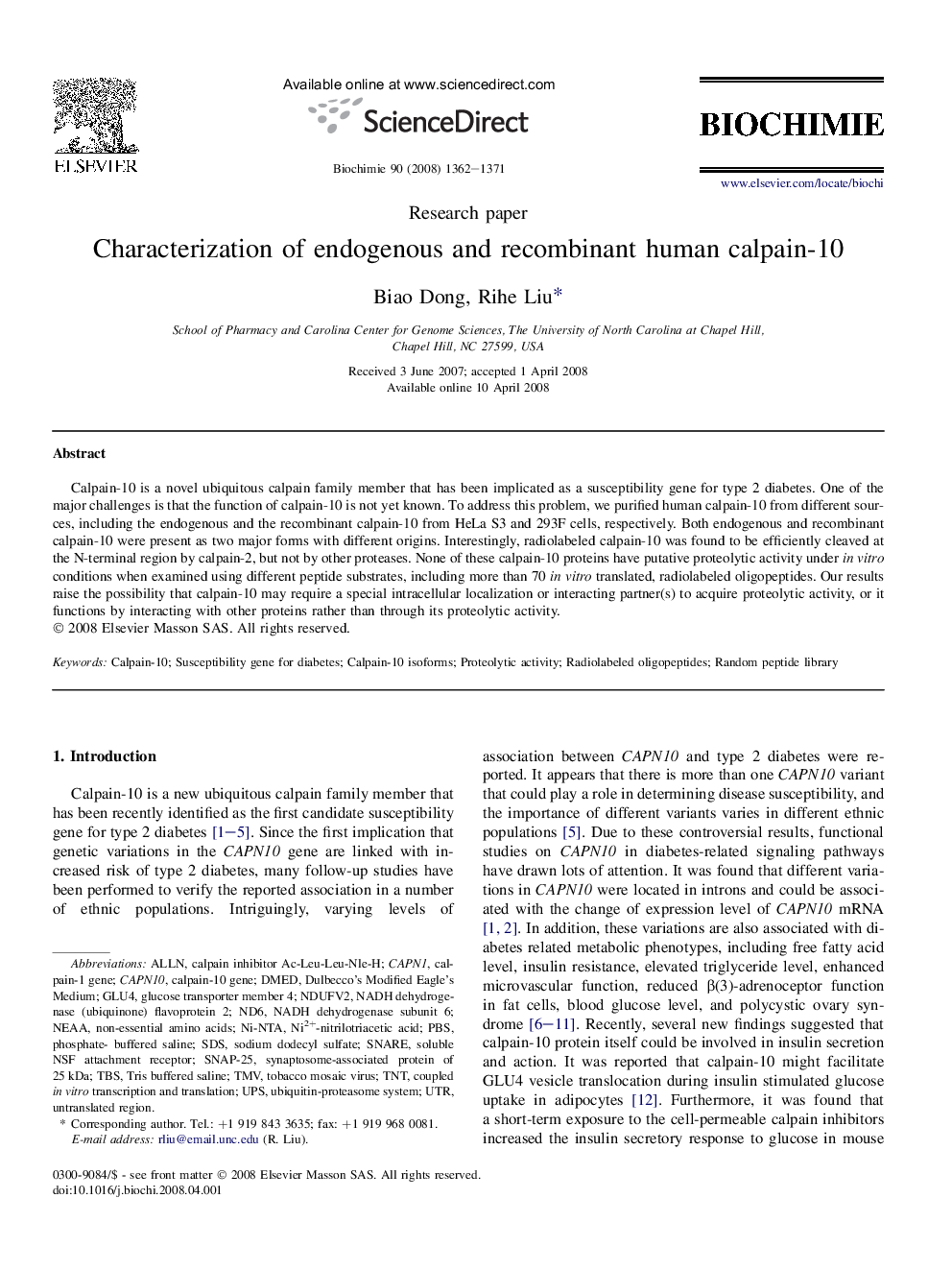| Article ID | Journal | Published Year | Pages | File Type |
|---|---|---|---|---|
| 1952863 | Biochimie | 2008 | 10 Pages |
Abstract
Calpain-10 is a novel ubiquitous calpain family member that has been implicated as a susceptibility gene for type 2 diabetes. One of the major challenges is that the function of calpain-10 is not yet known. To address this problem, we purified human calpain-10 from different sources, including the endogenous and the recombinant calpain-10 from HeLa S3 and 293F cells, respectively. Both endogenous and recombinant calpain-10 were present as two major forms with different origins. Interestingly, radiolabeled calpain-10 was found to be efficiently cleaved at the N-terminal region by calpain-2, but not by other proteases. None of these calpain-10 proteins have putative proteolytic activity under in vitro conditions when examined using different peptide substrates, including more than 70 in vitro translated, radiolabeled oligopeptides. Our results raise the possibility that calpain-10 may require a special intracellular localization or interacting partner(s) to acquire proteolytic activity, or it functions by interacting with other proteins rather than through its proteolytic activity.
Keywords
ALLNsoluble NSF attachment receptorCalpain-10CAPN10CAPN1DMEDNEAANi-NTANADH dehydrogenase subunit 6ND6PBSTMVNDUFV2SNAP-25SDSTBSSNAREDulbecco's modified Eagle's mediumnon-essential amino acidsTris buffered salineTnTsodium dodecyl sulfateUbiquitin-proteasome systemProteolytic activityUTR یا untranslated regions untranslated regionTobacco mosaic virussynaptosome-associated protein of 25 kDaRandom peptide libraryUPS
Related Topics
Life Sciences
Biochemistry, Genetics and Molecular Biology
Biochemistry
Authors
Biao Dong, Rihe Liu,
